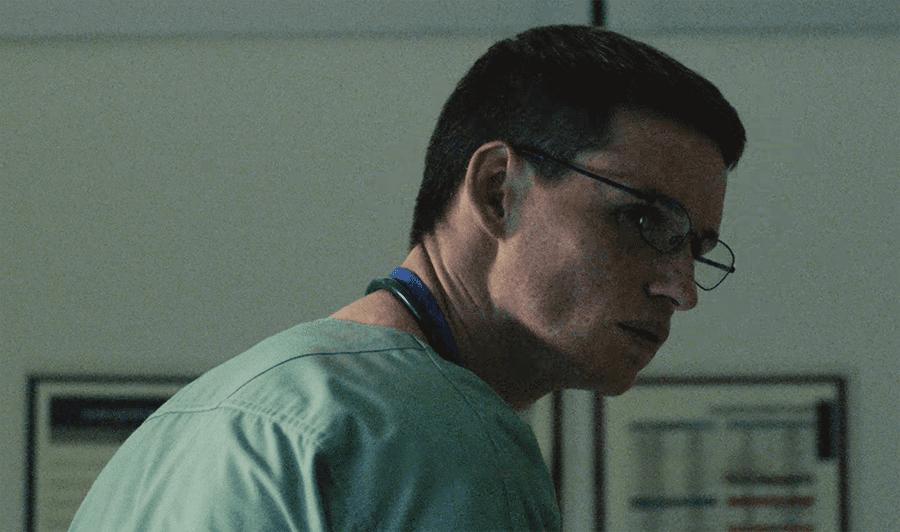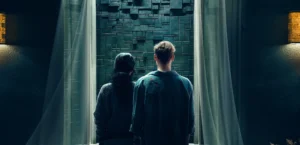The Good Nurse is based on the true story of Charles Cullen and his crimes as what some people call “an angel of mercy” killer. The film follows Jessica Chastain’s character, Amy Loughren, also based on a real person, as she is holding a secret of her own. Her heart is failing and needs a transplant. The issue is that she has a child and a job, where she will not qualify for time off or the proper health insurance until she is there for a year. Amy’s physician is afraid that if she keeps working, it may kill her or cause her to suffer a serious injury like a stroke or heart failure. The good doctor even tells Amy to teach her daughter the signs of a stroke because she is at such a high risk.
That’s when Charles (Eddie Redmayne) shows up, and they hit it off immediately. Charles helps Amy keep her secret as he catches her having tachycardia during her shift. He even helps watch her kids and takes some pressure off her. Even when she has another heart issue, he finds a way to get her medication out of the Pyxus (a medication dispensing machine). How? If you cancel it quickly while still grabbing the pharmaceutical products, it won’t be the entry.
However, a handful of patients on Amy’s floor started to die since Charles showed up, and they all had the same thing in their system that should not be there — insulin. Any person with diabetes knows what taking too much insulin can do. This places you in a hypoglycemic coma that can lead to death. The issue is reported to the police, but the hospital administrators don’t want to pursue it officially. Why? It’s simple, really. It all has to do with insurance premiums. Especially for hospitals that do not want to be sued for malpractice.
Amy investigates and finds out Charles had the same issues at several hospitals, and the same result played out like Groundhog Day. The patients on Charles’s floor would die and quietly let him go. Her further inquiries help her solve the case of how insulin is getting into the patient. This is an issue because he is never on the floor when the incident occurs. He is injecting the medication into bags of saline.
The police provided evidence from Amy of Charles’s Pyxus log, but the administrators wouldn’t for the same liability reasons. The cops try to put a wire on Amy when talking to Charles. He was now let go by the hospital for simple date errors on his resume. Charles slams his hand on the table and walks away. The cops pick him up anyway, with a 48-hour hold on him. The cops cannot get him to admit what he did, but Amy is allowed in the room. He confesses to his friend but cannot remember all the names. He rattles off a few names like Ana Martinez, Douglas Stevenson, Kelly Anderson, and Amy’s to help him remember the name of Jack Ivins.
Amy, though, finally asks Charles what we are all wondering — Why did he do it? “They didn’t stop me,” he replies.
The ending of The Good Nurse shows Charles walking to his cell. The film notes that he pleaded guilty to the murder of twenty-nine patients. However, the real number is believed to be up to four hundred, per the filmmaker. Charles has never confessed to why he committed the murders and is set to be paroled in 2403.
While the film states he gave no reason, probably to enhance the film’s uneasy quality, there are reports that he wanted to end people’s suffering. However, per Charles Graeber’s book The Good Nurse: A True Story of Medicine, Madness, and Murder, there are contradictions. Some believe he was making this up because he had trouble remembering his crimes, and many victims who died had only superficial injuries or mild cases. Many were expected to make full recoveries.
Amy is a real person who meticulously reviewed hospital records that proved her friend was a serial killer. In fact, if the number of four hundred or more is accurate, he may be the deadliest one this country has ever made. According to Graeber, the reason Charles is allowed to go from hospital to hospital without arrest, legal action, or anything on his record is because of state laws. In the case of New Jersey, it states that only the most egregious incidents should be reported.
The ending of The Good Nurse leaves an important question: who decides who is egregious and what is not? That judgment was made by comparing the cost and effect of malpractice lawsuits and insurance. When you add up the fact that the penalty for failing to report incidents in the two states Cullen worked at, New Jersey and Pennsylvania, was low, and not reporting incidents outweighed the “hassle” of reporting suspicious deaths.
Read More: Capturing the Killer Nurse Review




